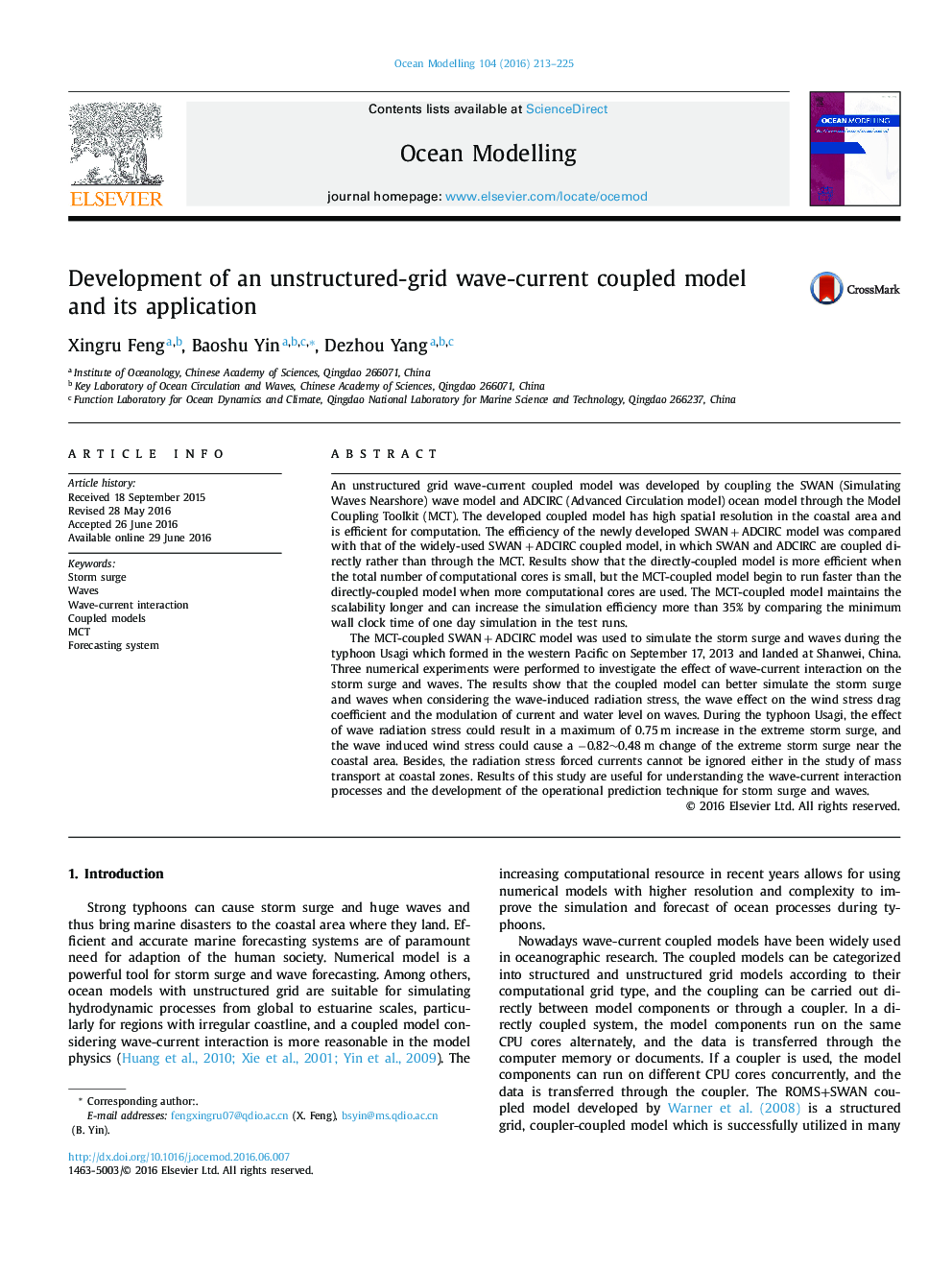| Article ID | Journal | Published Year | Pages | File Type |
|---|---|---|---|---|
| 6387986 | Ocean Modelling | 2016 | 13 Pages |
Abstract
The MCT-coupled SWANÂ +Â ADCIRC model was used to simulate the storm surge and waves during the typhoon Usagi which formed in the western Pacific on September 17, 2013 and landed at Shanwei, China. Three numerical experiments were performed to investigate the effect of wave-current interaction on the storm surge and waves. The results show that the coupled model can better simulate the storm surge and waves when considering the wave-induced radiation stress, the wave effect on the wind stress drag coefficient and the modulation of current and water level on waves. During the typhoon Usagi, the effect of wave radiation stress could result in a maximum of 0.75Â m increase in the extreme storm surge, and the wave induced wind stress could cause a â0.82â¼0.48Â m change of the extreme storm surge near the coastal area. Besides, the radiation stress forced currents cannot be ignored either in the study of mass transport at coastal zones. Results of this study are useful for understanding the wave-current interaction processes and the development of the operational prediction technique for storm surge and waves.
Related Topics
Physical Sciences and Engineering
Earth and Planetary Sciences
Atmospheric Science
Authors
Feng Xingru, Yin Baoshu, Yang Dezhou,
